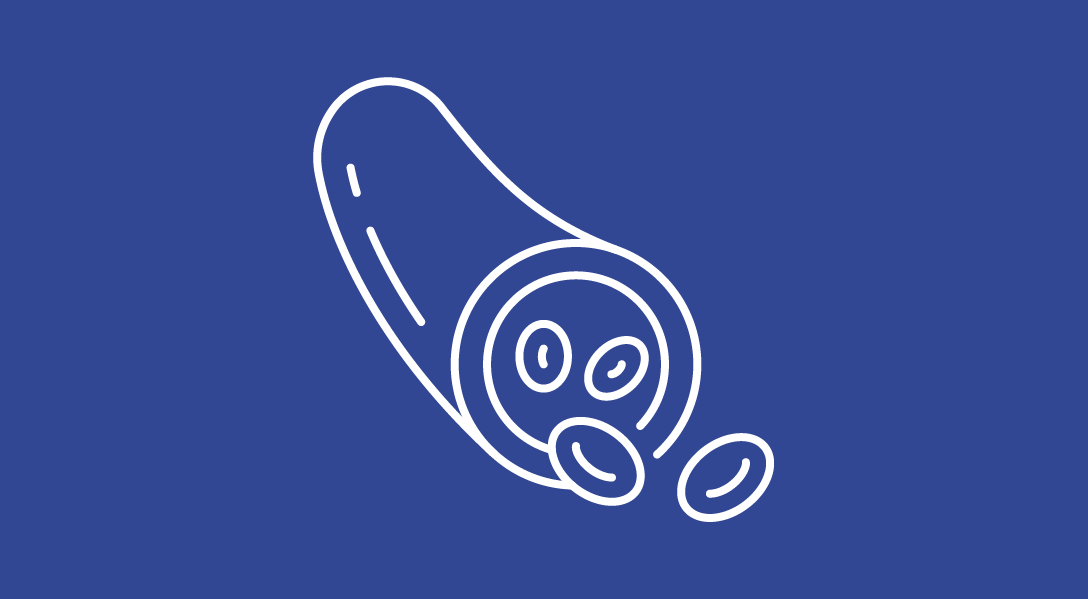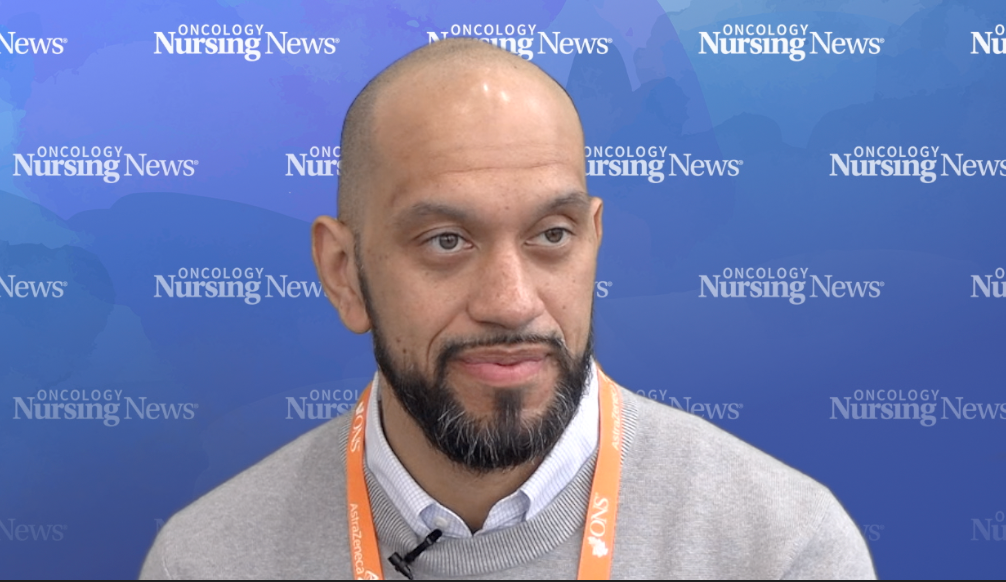Olaparib Shows Manageable AEs in Early Breast Cancer
Treatment-emergent symptoms were easily resolved after treatment with olaparib for BRCA1/2 high-risk HER2-negative breast cancer, as shown in a patient reported outcome analysis of the phase 3 OlympiA trial.
Olaparib Shows Manageable AEs in Early Breast Cancer

Patients with BRCA1/2 high-risk HER2-negative early breast cancer had a manageable adverse effect profile when treated with adjuvant olaparib (Lynparza) after neoadjuvant chemotherapy, surgery, and radiotherapy, as shown in findings from the phase 3 OlympiA trial (NCT02032823).
When olaparib was compared with placebo, fatigue severity was significantly greater for the treatment arm but not clinically meaningfully different. The FACIT-Fatigue scores for olaparib vs placebo at 6 months were –1.3 (95% CI, –2.4 to –0.2; P = .022) for neoadjuvant chemotherapy and –1.3 (95% CI, –2.3 to –0.2; P = .017) for adjuvant chemotherapy. At 12 months, it was –1.6 (95% CI, –2.8 to –0.3; P = .017) for neoadjuvant chemotherapy and –1.3 (95% CI, –2.4 to –0.2; P = .025) for adjuvant chemotherapy.
A total of 1836 patients were randomly assigned 1:1 to receive either 300 mg of oral olaparib twice a day or matched placebo. Patients were stratified by hormone receptor status, previous chemotherapy, and previous platinum chemotherapy use. The data cutoff was July 12, 2021.
Of the patients enrolled, 1751 completed a patient reported outcomes (PRO) questionnaire. There were no follow-up data for 213 patients, leaving 1538 to be enrolled on the PRO analysis. Overall, 770 patients received olaparib (neoadjuvant, n = 385; adjuvant, n = 385), and 768 received placebo (neoadjuvant, n = 361; adjuvant, n = 407).
Patient characteristics between the neoadjuvant and adjuvant chemotherapy arms included a majority of patients being 30 to 39 (37.3% vs 32.2%) and 40 to 49 (31.2% vs 37.2%), female (99.7% vs 99.5%), and White (74.8% vs 54.9%). Most did not have previous platinum chemotherapy (63.8% vs 82.1%), and the most common type of prior chemotherapy was anthracycline and taxane (97.3% vs 94.1%). Most patients had triple-negative breast cancer (79.9% vs 87.2%) and BRCA1 (65.3% vs 57.1%) or BRCA2 mutations (27.3% vs 21.0%). Finally, most patients were from either Europe (60.3% vs 39.9%), Asia Pacific or South Africa (26.9% vs 47.5%), or North America (11.9% vs 10.6%).
Patients who did not receive prior radiotherapy had less fatigue compared with those who did (1.4; 95% CI, 0.5-2.3; P = .003). When hormone receptor status was analyzed, investigators did not find any difference in fatigue severity.
Fatigue was also analyzed by geographical regions. When comparing fatigue between olaparib and placebo treatment, results were similar to overall findings, but were not reliable because of how small the subgroups were.
Additionally, at baseline, the EORTC QLQ-C30 was used, and there was no difference in scores between treatment arms. Those who were given adjuvant chemotherapy had slightly higher scores than those receiving neoadjuvant chemotherapy.
Global health status/quality of life at baseline was found to be 10 points lower, and baseline functional scales were 5 points lower than pretreatment scores. Of note, there were no clinically meaningful differences between the olaparib and placebo arms.
Patients who were given olaparib had greater nausea and vomiting symptom severity than those given placebo at 6 months with neoadjuvant chemotherapy (6.0; 95% CI, 4.1-8.0; P < .001) and adjuvant chemotherapy (5.3; 95% CI, 3.4-7.2; P <.001) and was similar at 12 months between both subgroups (6.4; 95% CI, 4.4 to 8.3]; P <.001; 4.5; 95% CI, 2.8-6.1; P <.001). Of note, nausea and vomiting symptoms showed no differences in severity at 18 months for both chemotherapy subgroups and at 24 months for adjuvant chemotherapy. For neoadjuvant chemotherapy, there was a difference of 2.3 points at 24 months (95% CI, 0.7-3.9; P = .006).
Role, Cognitive, and Social Functioning scale scores were found to be comparable between the olaparib and placebo groups over 24 months regardless of chemotherapy type. With neoadjuvant chemotherapy, a clinically meaningful improvement was observed in Role and Social Functioning from baseline to 24 months in both treatment arms.
From baseline to 24 months, financial difficulties improvements ranged from 7.7 to 10 points for all groups. Of note, those receiving olaparib had significant appetite loss but recovered at 18- and 24-month check-ins. Patients in the olaparib arm also had more constipation at 6 months (P = .014) in the neoadjuvant chemotherapy group and at 12 months (P = .004) in the adjuvant chemotherapy group. A worse severity in dyspnea was observed at 12 months (P = .002) and 24 months (P = .049) for those in the olaparib arm receiving neoadjuvant chemotherapy.
At 6 months, 97% of patients adhered to the questionnaire, and 69% adhered at 24 months. Investigators did not believe any nonadherence was related to health.
Reference
Ganz PA, Bandos H, Španić T, et al. Patient-reported outcomes in OlympiA: a phase III, randomized, placebo-controlled trial of adjuvant olaparib in gBRCA1/2 mutations and high-risk human epidermal growth factor receptor 2-negative early breast cancer. J Clin Oncol. Published online February 1, 2024. doi:10.1200/JCO.23.01214
Workflow, Educational Tools Improve Use of Silicone Film to Prevent Radiation Dermatitis
April 25th 2024Tools to educate oncology nurses and patients on the use of Mepitel film to prevent radiation dermatitis has improved the workflow around its introduction to patients with breast cancer, as well as its application and maintenance.
Olaparib Plus Chemo May Not Improve Outcomes vs Chemo Alone in BRCA Wild-Type TNBC
April 23rd 2024Patients with BRCA wild-type triple-negative breast cancer treated with olaparib on a gap schedule with chemotherapy did not experience improved responses compared with chemotherapy alone in the neoadjuvant setting.
Nurse Practitioners Weigh in on Data From the San Antonio Breast Cancer Symposium
January 16th 2023Loyda Braithwaite, MSN, RN, AGPCNP-BC, AOCNP; and Jamie Carroll, APRN, CNP, MSN, highlight presentations from the 2022 San Antonio Breast Cancer Symposium that will influence oncology nursing practice.




